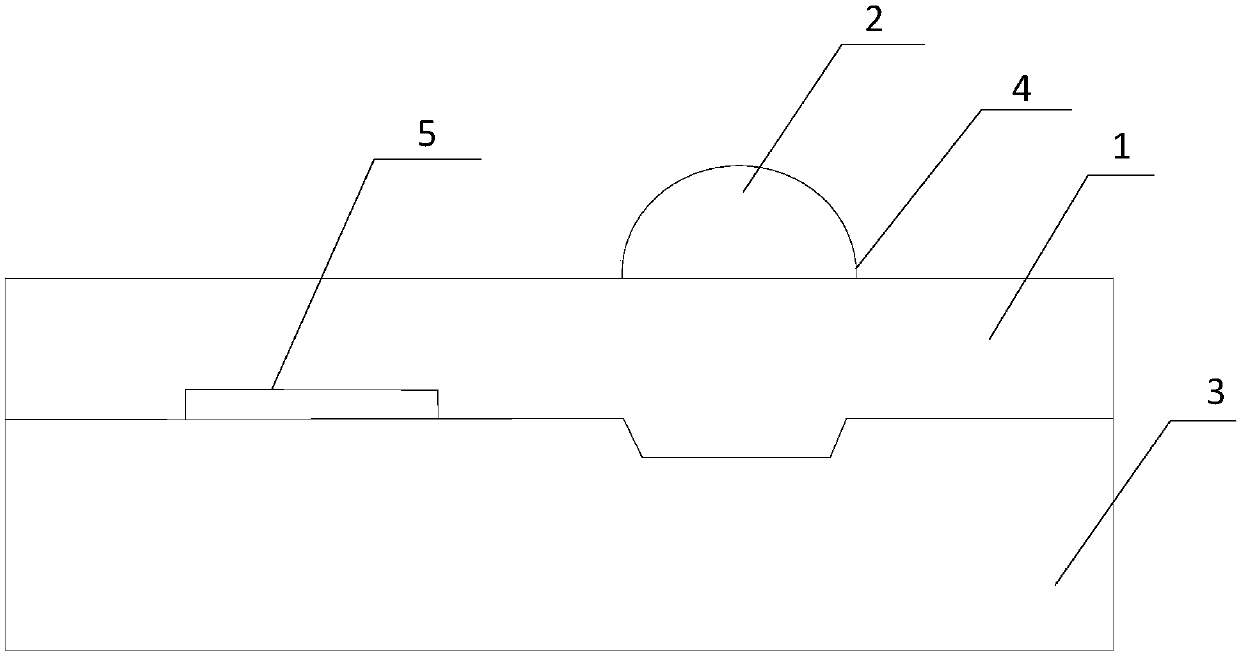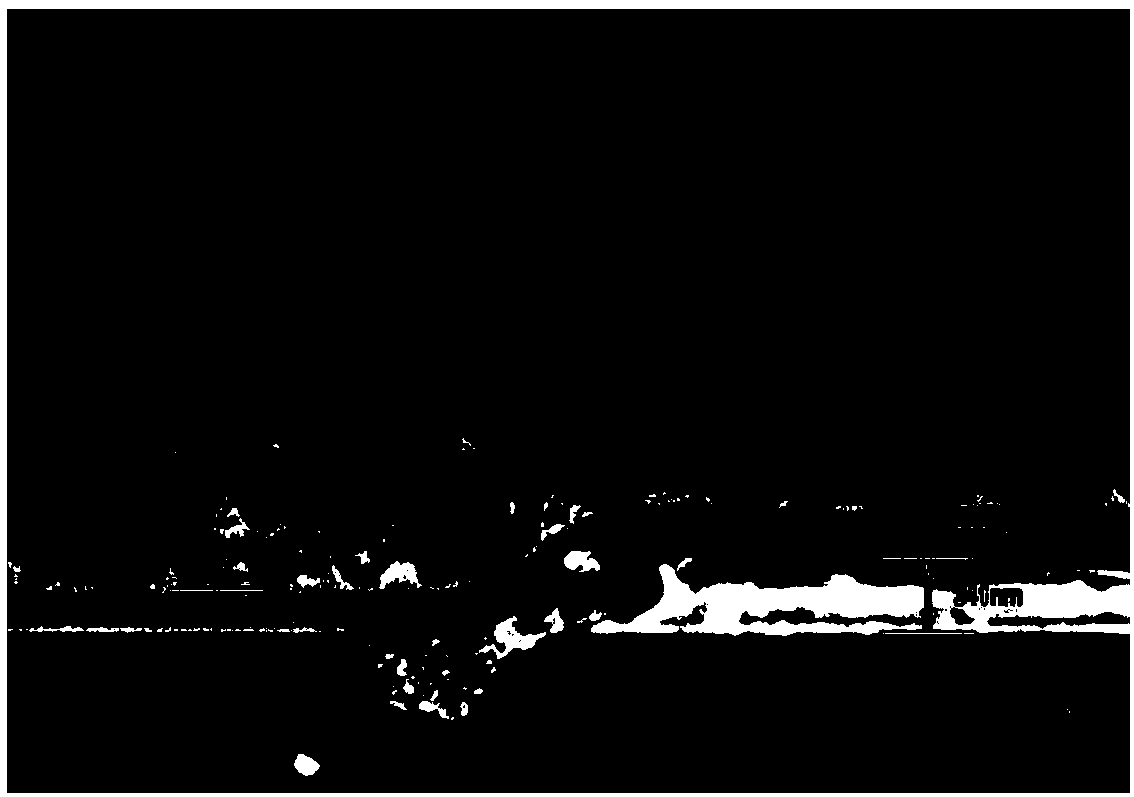Dry etching method
A dry etching and etching rate technology, applied in semiconductor devices, electrical components, transistors, etc., can solve problems such as inability to guarantee dry etching quality and other thin film damages
- Summary
- Abstract
- Description
- Claims
- Application Information
AI Technical Summary
Problems solved by technology
Method used
Image
Examples
Embodiment 1
[0047] An embodiment of the present invention provides a dry etching method, including:
[0048] 70% of the thickness of the silicon-containing film layer was etched away by chlorine gas and sulfur hexafluoride gas at a pressure of 45 mTorr, wherein the mass ratio of sulfur hexafluoride gas to chlorine gas was 1:30.
[0049] 20% of the thickness of the silicon-containing thin film layer was etched away by oxygen gas and carbon tetrafluoride gas at a pressure of 45 mTorr, wherein the mass ratio of oxygen gas and carbon tetrafluoride gas was 1:5, and the over-etching amount was 10%.
[0050] 10% of the thickness of the silicon-containing film layer was etched away by chlorine gas and sulfur hexafluoride gas at a pressure of 45 mTorr, wherein the mass ratio of sulfur hexafluoride gas to chlorine gas was 1:30, and the over-etching amount was 20%.
[0051] Wherein, the above-mentioned dry etching temperature is 20 degrees Celsius.
Embodiment 2
[0053] An embodiment of the present invention provides a dry etching method, including:
[0054] 55% of the thickness of the silicon-containing film layer was etched away by chlorine gas and sulfur hexafluoride gas at a pressure of 30 mTorr, wherein the mass ratio of sulfur hexafluoride gas to chlorine gas was 1:30.
[0055] 30% of the thickness of the silicon-containing thin film layer was etched away by using oxygen gas and carbon tetrafluoride gas at a pressure of 30 mTorr, wherein the mass ratio of oxygen gas and carbon tetrafluoride gas was 1:1.5, and the over-etching amount was 20%.
[0056] Using chlorine gas and sulfur hexafluoride gas at a pressure of 30 mTorr to etch away 15% of the thickness of the silicon-containing thin film layer, wherein the mass ratio of sulfur hexafluoride gas to chlorine gas is 1:20, and the over-etching amount is 15%.
[0057] Wherein, the above-mentioned dry etching temperature is 30 degrees Celsius.
Embodiment 3
[0059] An embodiment of the present invention provides a dry etching method, including:
[0060] 75% of the thickness of the silicon-containing film layer was etched away by chlorine gas and sulfur hexafluoride gas at a pressure of 30 mTorr, wherein the mass ratio of sulfur hexafluoride gas to chlorine gas was 1:20.
[0061] 15% of the thickness of the silicon-containing thin film layer was etched away by using oxygen gas and carbon tetrafluoride gas at a pressure of 30 mTorr, wherein the mass ratio of oxygen gas and carbon tetrafluoride gas was 1:10, and the over-etching amount was 10%.
[0062] 10% of the thickness of the silicon-containing thin film layer was etched away by chlorine gas and sulfur hexafluoride gas at a pressure of 30 mTorr, wherein the mass ratio of sulfur hexafluoride gas to chlorine gas was 1:20, and the over-etching amount was 15%.
[0063] Wherein, the above-mentioned dry etching temperature is 25 degrees Celsius.
PUM
 Login to View More
Login to View More Abstract
Description
Claims
Application Information
 Login to View More
Login to View More - Generate Ideas
- Intellectual Property
- Life Sciences
- Materials
- Tech Scout
- Unparalleled Data Quality
- Higher Quality Content
- 60% Fewer Hallucinations
Browse by: Latest US Patents, China's latest patents, Technical Efficacy Thesaurus, Application Domain, Technology Topic, Popular Technical Reports.
© 2025 PatSnap. All rights reserved.Legal|Privacy policy|Modern Slavery Act Transparency Statement|Sitemap|About US| Contact US: help@patsnap.com



